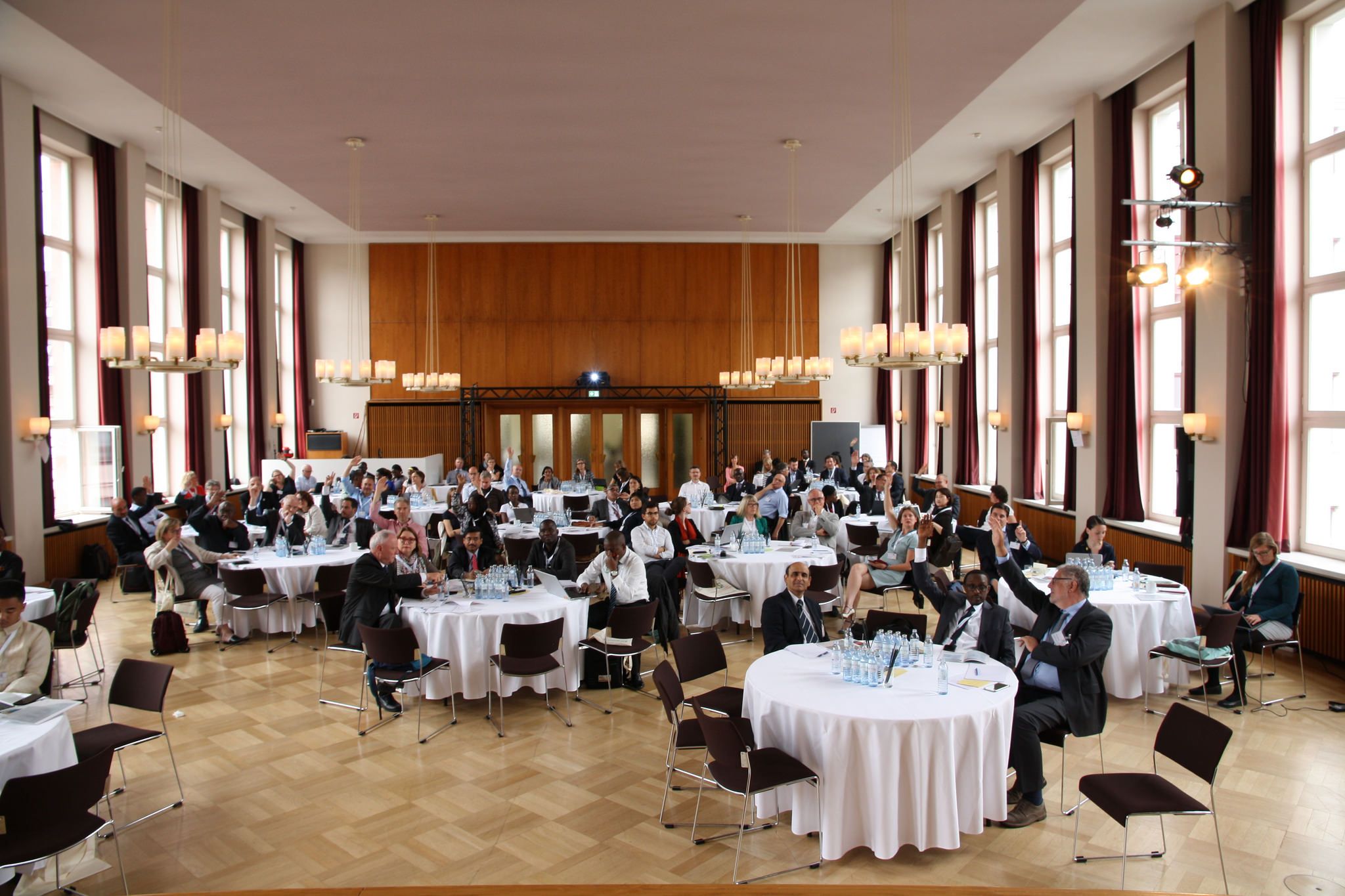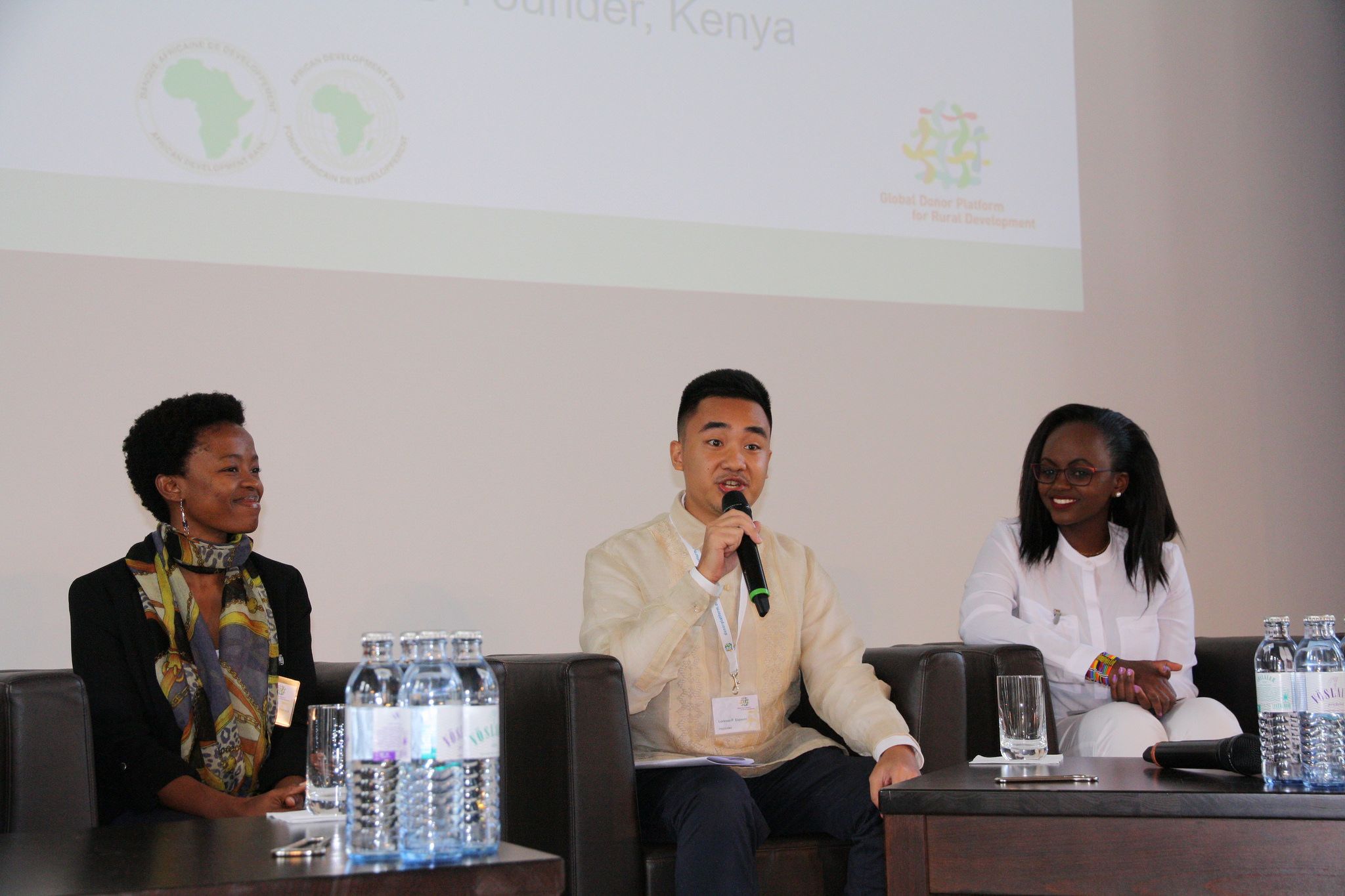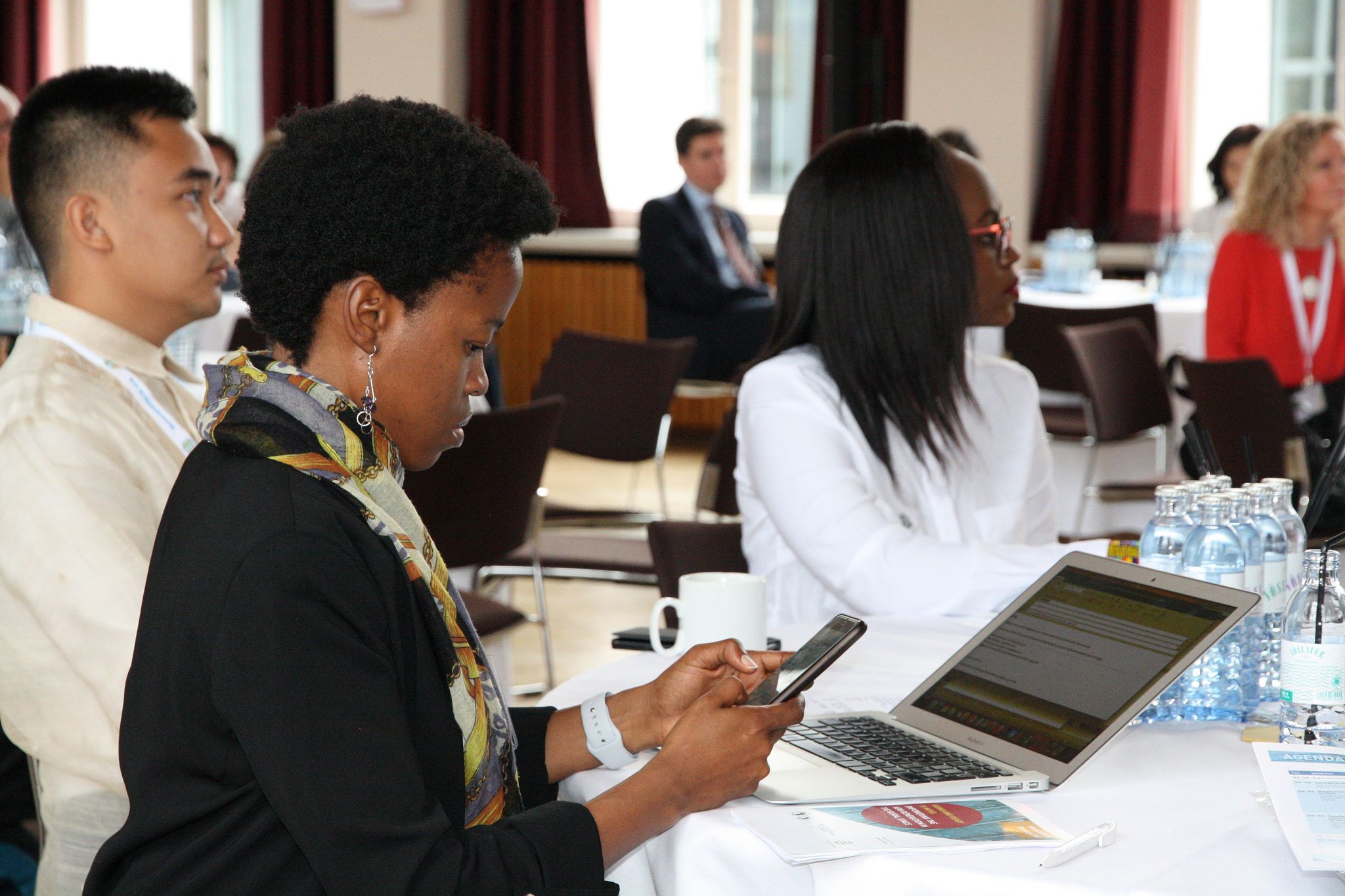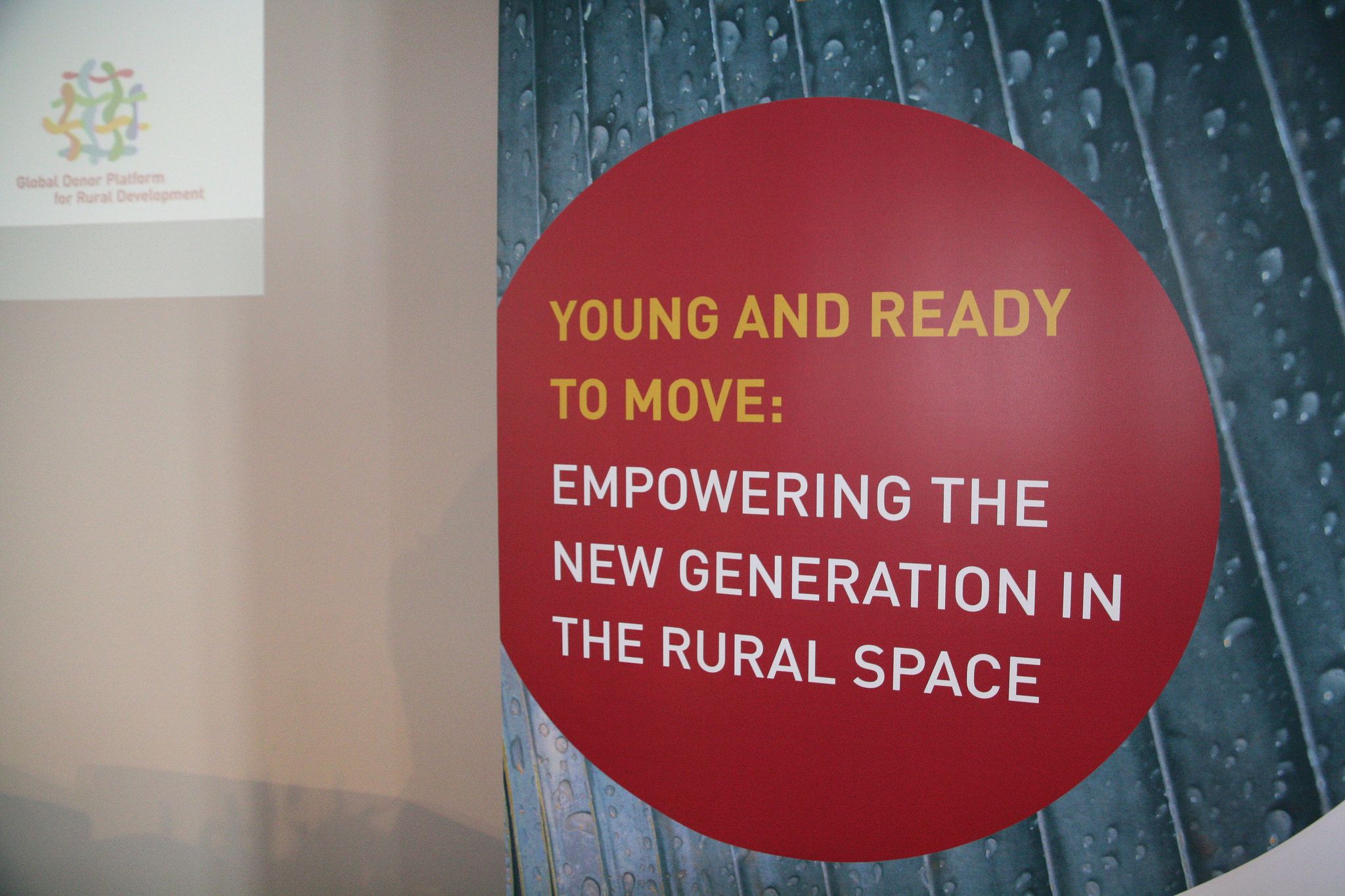![]() This article is part of our Editorial Series called “GFAR impakters”. This is done in partnership with GFAR – The Global Forum on Agricultural Research and Innovation – For more follow on Twitter: #GFARImpakters or view here.
This article is part of our Editorial Series called “GFAR impakters”. This is done in partnership with GFAR – The Global Forum on Agricultural Research and Innovation – For more follow on Twitter: #GFARImpakters or view here.
Young people account for one out of every six people worldwide, and in many countries, the percentage of under 25-year-olds exceeds that of any other age group. The youth factor makes Africa the youngest continent in the world, where young people make up 60 percent of the population. The number of youths will continue to increase while a large percentage of the population still live in rural areas.
The future of agriculture and rural development depends on the young generation. Throughout the world, however, being young and living in rural areas equals a twofold challenge. A growing number of donors recognize that empowering the young for a sustainable rural space is key to sustainable development and to achieve the next level of SDGs. Young people are at the heart of the future of agriculture, food production and rural development, but inclusive strategies are required to help make agriculture and rural livelihoods more attractive for them.
 In the photo: The 2018 Annual General Assembly of the Global Donor Platform for Rural Development put the focus on youth in the rural space. Photo credit: Global Donor Platform for Rural Development
In the photo: The 2018 Annual General Assembly of the Global Donor Platform for Rural Development put the focus on youth in the rural space. Photo credit: Global Donor Platform for Rural Development
A new paradigm: Rural youth are driving the change
At the 2017 G20 Summit, heads of state agreed on a Rural Youth Employment Initiative. This historic vote signalled a clear political commitment of the international community to improve the efforts to empower youth in rural areas.
In this sense, the Global Donor Platform for Rural Development organised its Annual General Assembly 2018 under a title that hints at this new hot policy area: “Young and Ready to Move: Empowering the New Generation in the Rural Space”. More than 100 representatives of donor organisations, development experts and young people from all over the world gathered in Berlin on June 13-14 to discuss strategic perspectives on the role of donors and international development agencies in empowering young people in rural areas.
Bringing young voices into the discussion
From the first day on, the conference had an innovative format. It brought together young women and men from rural areas and the donor and development community to carry out a face-to-face dialogue: how do we empower the youth and make ARD (Agricultural Research and Development) programmes and private sector engagement more youth-oriented? What matters most for youth empowerment in the rural space?
The inclusive set-up provided a forum for young people from Africa and Asia to speak up and to discuss their ideas and hopes with representatives from the donor community. The primary goal was to find ways to better align programmes and policies supported by the international community with the priorities of the young rural generation. “Donors should strive to engage young people to ensure that projects not only support youths but also involve their ideas and innovations” – statements like this one from a young Ugandan participant perfectly outlined the concept of the debate.
This view was endorsed by various participants. As Lindsay Wallace from the Mastercard Foundation said, “rural youth are driving change; we can help by listening, leveraging technology and engaging holistically.” Or, in the words of Meredith McCormack of USAID: “we need to be listening actively and engaging with youth and not just inviting them to the table but have them being active participants in our project design, in our implementation, in our monitoring and evaluation.”

In the photo: Annual General Assembly in Berlin, June 2018. Photo credit: Global Donor Platform for Rural Development
Facilitating the inclusion of rural youth in policy dialogue and programme design
Many members and partners of the Global Donor Platform for Rural Development are already walking the talk. This is reflected in debates and initiatives such as the aforementioned G20 Initiative for Rural Youth Employment and the integration of youth issues in strategic frameworks. The linkages between the future of agriculture, the transformation of rural spaces and the need to provide young people with the conditions for a decent and meaningful life raise questions about the role that donors can play.
A recently released compendium, ‘Donor engagement with youth’, commissioned by the Global Donor Platform for Rural Development in preparation for the event, sheds light on the strategies and activities already undertaken by donors. It draws on direct interviews with 20 Platform members, as well as a desk review of documentation shared by members, recent publications and conference reports on the topics of rural youth and youth employment. The compendium aims to provide a better understanding of how Platform members engage with youth and, in particular, rural youth, but also to inspire and support discussions on how to move forward collectively.
The debate in Berlin worked with this idea, resulting in a lively discussion during which participants listened and exchanged views to learn from one another and to develop a joint vision. There was a consensus that:
- Many of the challenges that young people in rural areas encounter are interlinked
- Donors need to create an environment that encourages private sector integration
- Social media can be effectively used to communicate valuable information to young people
- Young farmers need to be empowered in the changing world. Donors can support this by providing basic and technical education to enhance their capacity to learn, innovate and adapt.

In the photo: What matters the most for the youth empowerment in the rural space? The discussion about these key priorities brought the young generation of agriculturalists on stage to share their views. Photo credit: Global Donor Platform for Rural Development
The tone of the thematic discussions during the second day was set by the keynote speech by Ibrahim Ceesay, Chair of the CAADP Youth Network, who examined strategic framing to promote youth empowerment. He underlined the necessity for a world where every young person has the capacity, capability, and ability to unleash their potential and achieve a livelihood of self-growth and self-development.
As Ibrahim Ceesay stated: “empowering youths in the agricultural sector extends beyond the creation of tailor-made opportunities and incentives for young people to engage in agriculture. The direct impact and economic benefits it will bring to young people and above all, addressing the youth unemployment dilemma, is perhaps the most important dimension.”



 In the photo: The 2018 Annual General Assembly of the Global Donor Platform for Rural Development put the focus on youth in the rural space. Photo credit: Global Donor Platform for Rural Development
In the photo: The 2018 Annual General Assembly of the Global Donor Platform for Rural Development put the focus on youth in the rural space. Photo credit: Global Donor Platform for Rural Development




